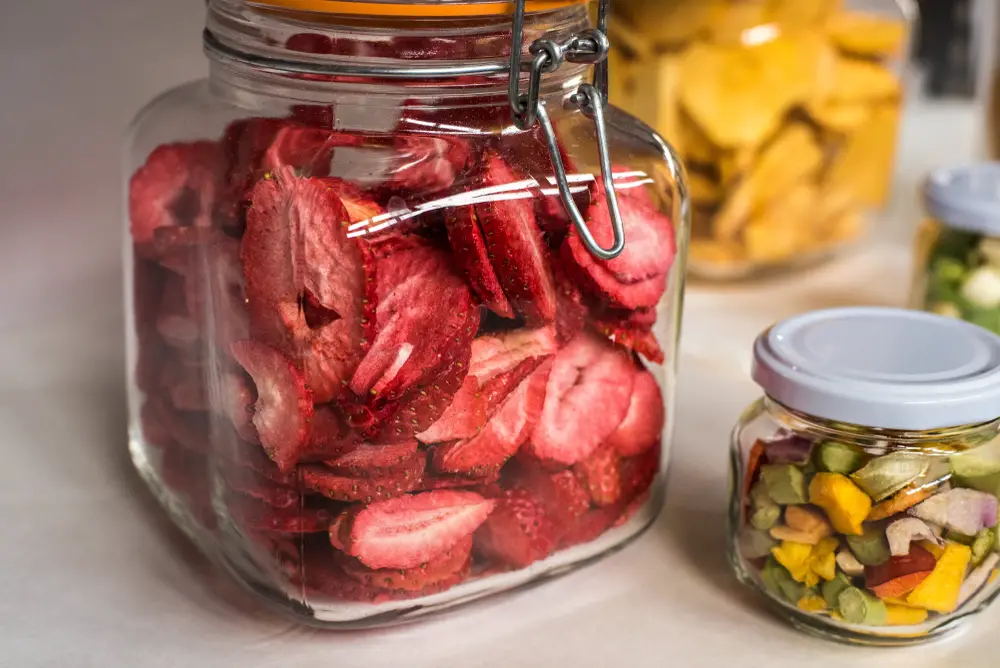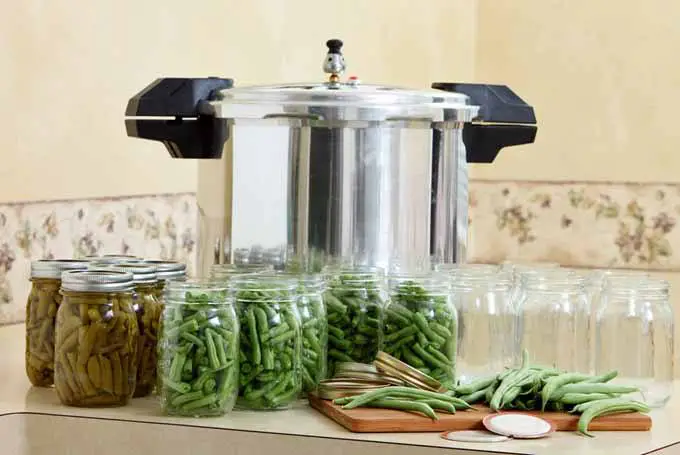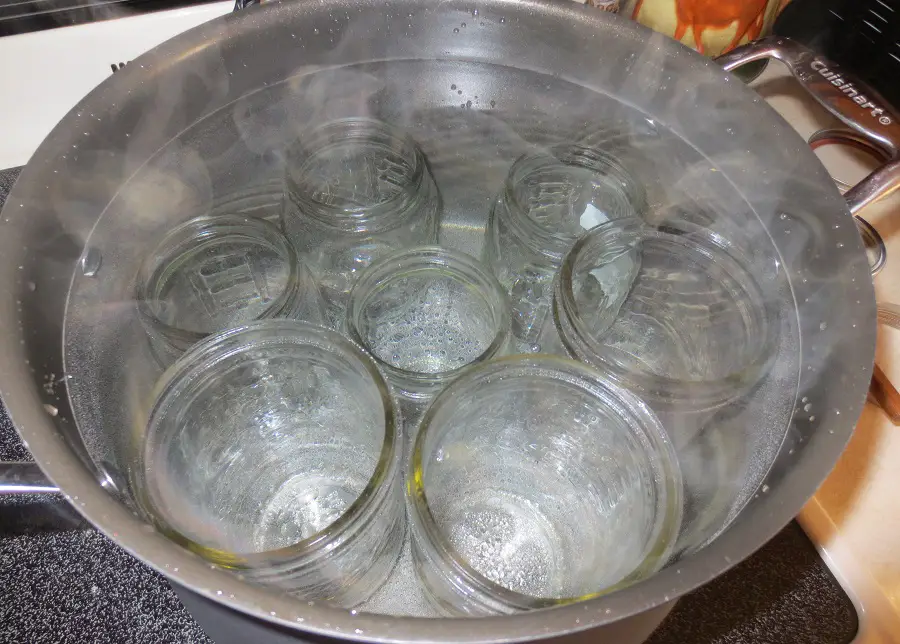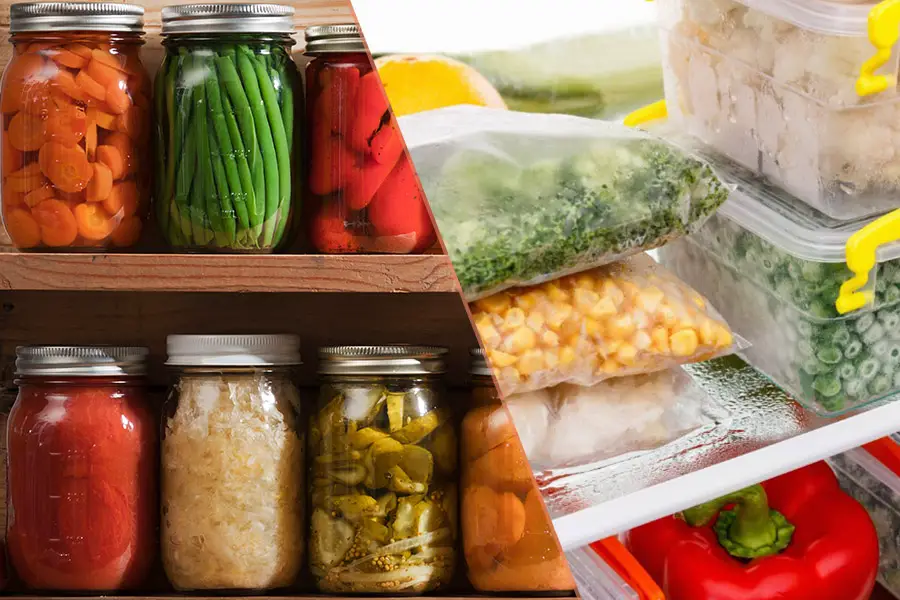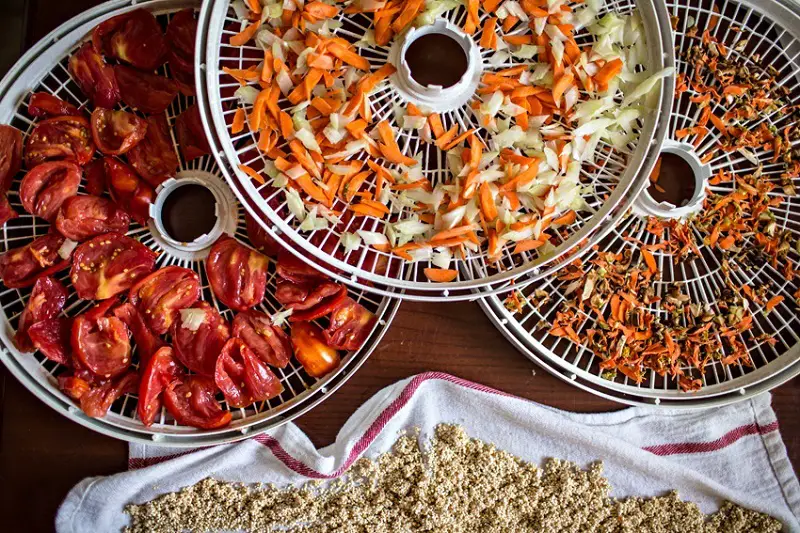So many gardeners focus on freezing or canning produce for good reason. It keeps fruits and vegetables fresh, preserves their nutrients, and the food is very easy to use once removed from the freezer or pantry. But that is not the only way to preserve your harvest. Here are several methods of preserving food without freezing or canning.
The methods for preserving food without freezing or canning are storing food in sand, dehydrating foods, freeze-drying foods, fermenting foods, preserving citrus fruits in brine, and preserving food in the pantry, among others.
Table of Contents
Store Food In Sand
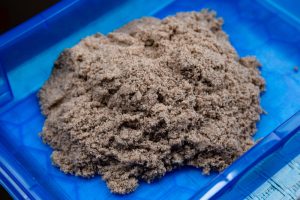
Foods like carrots, rutabagas, turnips, parsnips, potatoes, sweet potatoes, yams, apples, and pears store very well tucked in a layer of sand. Moisture makes produce rot faster, and the sand provides a protected layer that absorbs that humidity and keeps them at a cooler temperature.
Steps To Store Food In Sand
There are several steps to storing food in sand. Here’s what they are:
- Let your unwashed produce air dry on the table for a couple of days to remove excess dampness.
- Take a bin and fill it with play sand from your local home improvement store.
- Tuck the fruits or vegetables into the sand.
- The produce should have plenty of room between the different fruits or vegetables. If they touch, they run the risk of molding. The sand acts as a barrier against moisture and regulates the temperature of the produce.
- Store the bin in a cool, dry place and use your produce within six months.
Dehydrate Foods
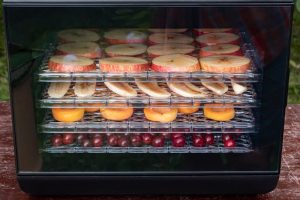
Most foods that are preserved by canning or freezing can also be dehydrated.
Dehydration removes the moisture, which makes the food last longer. You can purchase a dehydrator or dry items on a cookie sheet in your oven. You can even hang some herbs in a cool area and let them air dry.
Steps To Dehydrate Food
Here are the steps:
- For fruits and vegetables, either peel them or leave the skins on.
- Remove stems and seeds.
- Slice apples into wedges and cut other produce into bite-size pieces. Produce shrinks when dehydrated so don’t cut them too small. The time to dry also varies depending on how big the pieces are.
- If you have a dehydrator, follow the instructions for time and temperature.
- To dehydrate produce in the oven, set the oven temperature to the lowest possible temperature – usually between 170° and 200° F (76° to 93° C) and bake the produce for two to four hours.
- With either method, you’ll need to check the produce regularly. You’ll know it’s done when you can snap a piece in half like a crisp potato chip.
- Then store the produce in containers with tight-sealing lids. Canning jars or washed pickle jars work great for storage.
Dehydrated fruits and vegetables are delicious snacks, and they can be added to soups. Sprinkle them in the soup, and they will rehydrate in the boiling liquid.
Try this method with zucchini, peppers, kale, tomatoes, corn, apples, bananas, pineapple, coconut, and more. Store dehydrated fruits, vegetables, and meat in the pantry.
Turn your meats into jerkies by slicing the meat very thin and adding seasoning. Use the same methods as above.
Check out our guide to food dehydration.
Freeze-Drying Foods
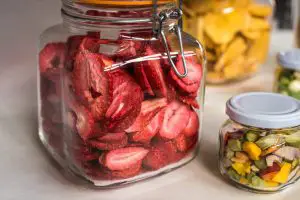
While the name has “freeze” in it, freeze-drying uses a very different technology that does not require conventional freezing or canning. Instead of using heat to remove moisture, a freeze-dryer uses low temperatures and pressure. It freezes the material, reduces the pressure, and then adds heat to allow the frozen water in the material to change directly to vapor. The result is a crispy, dry food that retains its original flavor.
Fruits, vegetables, and meat can be preserved this way. Follow the manufacturer’s instructions with regard to preparation and freeze-drying time. Store your freeze-dried items in an airtight container in a cool place.
The only drawback to this method is that freeze-dryers are expensive.
Ferment Foods
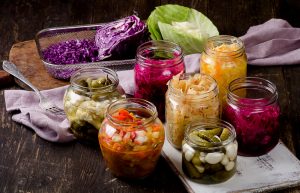
Sauerkraut and kimchi are easy recipes using produce from your garden.
Steps To Fermenting Food
The most basic fermented food is sauerkraut. Here are the steps:
- Slice cabbage into thin pieces and place them in a bowl.
- Add salt and start tossing and squeezing the cabbage with your hands. After a bit, the cabbage starts to form a liquid. Keep going until there is enough liquid to cover the cabbage once you put it in a jar.
- Transfer it to the jar and place a weight on the cabbage to keep it submerged.
- Wait several days and then taste it. Once it reaches the tartness you desire, store it in the fridge.
Use a purchased starter culture to ferment even more fruits and vegetables. Cut, peel and slice the produce, and add it to a jar with the starter culture prepared according to the package directions and let the foods ferment until they taste good. Store them in the fridge. They should last months.
Preserve Citrus Fruits In Brine
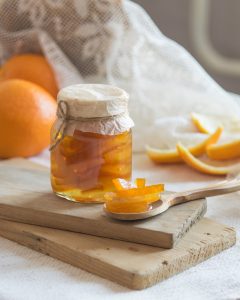
A traditional Moroccan dish, this is a great way to preserve citrus fruits.
Steps To Preserving Citrus In Brine
Here are the steps:
- Choose organic, unblemished, fresh lemons, clementines, or blood oranges.
- Scrub them well and slice them into wedges.
- Sprinkle the fruit’s flesh with a lot of coarse salt and add them to a jar. Add more salt to the jar as well.
- Once the jar is packed with fruit, add lemon juice so that all of the fruit is under the liquid.
- Cover the jar and place it in a cool, dark place for about four weeks.
- Every so often, shake the jar to redistribute the brine.
- The rinds of the fruit will soften into a salty, sweet, citrusy condiment and taste delicious chopped up and added to recipes.
Preserve Food In The Pantry
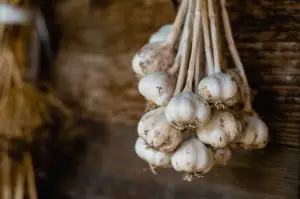
Preserving food without freezing or canning can be labor-intensive or very easy. Hang garlic and onions in a cool, dry place, and they will stay fresh for quite a while. The time depends on your climate and storage conditions. If your garlic starts to dry out, take it out, dehydrate it, and grind it into small pieces or a powder.
Potatoes can be stored in a container in the pantry as well. Just make sure you check them regularly, and if one goes bad remove it quickly. Otherwise, it will spread to the rest of the container.
Wines, Liqueurs, And Ciders
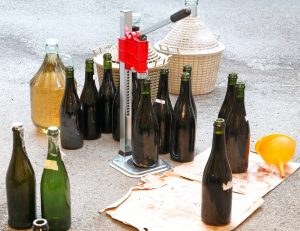
Crabapples, apples, and grapes are just some fruits that can be fermented into wine. You are not saving the fruit in its original form, but you are making use of your excess.
Press apples into juice or cider.
Berries can also be placed in a jar and covered with vodka or whiskey. Place the jars in a cool, dark area and let them sit for a month or two. The liquor infuses the berries, and the berries flavor the liquor.
Preserving Food Without Freezing Or Canning
While some people use oils, sugars, salts, and smokers to preserve food, a majority of those items need to be stored in the refrigerator in order to prevent food-borne illnesses. Follow proper guidelines when using any preservation method.
There are many ways to preserve food, and most of the above do not require electricity to process or store – some forms of dehydration being the exception. They also add a variety of options to your harvested foods. What is your favorite method of preserving foods from your garden? Let us know in the comments below!
